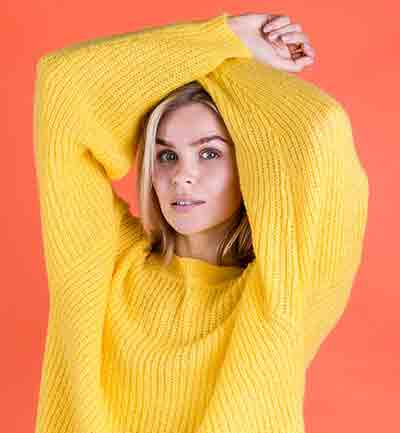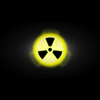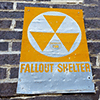Nuclear Fallout Guide
The world we live in is full of tension and conflict, and peace even where it does exist does so without guarantees for tomorrow we must therefore face the hard reality that someday a nuclear attack against the United States could occur and equally important, we must also realize that as horrifying and destructive as that prospect may seem, such an attack might be survivable, and it would not mean the end of the world or the end of our nation, and you can greatly improve your own chances of survival if you remember these facts about protection.
Have Your Phone set to recieve Community Alerts
In time of emergency our government and many others around the world will be doing everything in their power to keep the peace, second, you'll probably have some time to prepare of course attack could come by surprise but more likely there would be a time of growing international tension with all its signs and warnings lasting days perhaps even weeks giving you time for some preparations.
Third, wherever we live we're all inclined to think of our own hometown as target number one, but this is a very big country with many cities, industries, and military bases. Defense Department studies show that even under the heaviest possible attack less than 5% of our entire land area would be affected by blast and heat from nuclear weapons of course that 5% contains a large percentage of our population but even in these high-risk areas if there's sufficient time to permit evacuation many millions of lives could be saved.
The other 95% of our land would escape untouched, except possibly by radioactive fallout. Here are things you need to know, the WARNING SIGNALS. First the warning signals, there are two of them and it's important that you know the difference the attention or alert signal is used for peacetime emergencies tornado and hurricane warnings, industrial explosions and other immediate threats to your safety the signal is a long steady blast on the civil defense sirens or other warning devices it means turn on your radio or television and cell phones.
Your local authorities have a peacetime emergency message for you. The attack warning signal is a three to five minute wavering sound on the sirens or a series of short blasts on whistles or horns, this signal has only one meaning an actual enemy attack against the United States has been detected; don't pick up the phone to find out what's happening, the phone lines need to be kept clear for official emergency use, don't wait if you're at work or in school take cover in the basement or an inner corridor, if at home go to your basement or fallout shelter, you can find protection under the stairs, take a battery-powered radio with you then tune to your local emergency broadcast station for news and official instructions.
KNOW THE EFFECTS OF NUCLEAR EXPLOSION
When a nuclear weapon explodes four things happen, first a blinding flash of light, then a searing wave of heat shooting out from the nuclear fireball hits. Then the blast wave comes carrying dangerous debris flying in all directions, and finally if the burst has occurred at or near ground level there soon will be radioactive fallout dropping from the mushroom cloud.
Whatever you do don't look at the flash, it can blind you, instead take cover immediately behind a tree or a wall in the shelter of a ditch curl up in a ball and cover your head with hands and arms stay there till both the heat and the blast waves have passed. If your home is in an area where the heat wave has started small fires use the next few minutes to put them out, prevent them from growing into big fires, then shut off your main water valve you'll have about 30 minutes to do all this before radioactive fallout hits.
BEFORE FALLOUT STARTS COMING DOWN
When a nuclear weapon explodes on or near the ground; tons of dirt and debris are pulverized and carried up into the mushroom cloud, vaporized by intense heat then condensed into millions of tiny particles of fallout no bigger than grains of salt or sand, spread by high-altitude winds fallout can blanket vast areas.
Wherever it falls, it spells danger. The tiny particles emit invisible gamma rays, much like x-rays, and if your body absorbs too much of this radiation, it can cause sickness or Death. However, it’s not contagious, you can safely treat a victims of radiation sickness without fear of catching it. The one thing that can make you a victim is direct exposure to fallout, and you do have defenses AGAINST RADIATION.
The three defenses for radiation are:
1. Mass
2. Distance
3. Time
Mass means thick, dense materials to shield you and screen out most of the radiation, like 16 inches of brick, 12 inches of concrete, a concrete block filled with sand, or even 2 feet of packed Earth.
Your second defense is distance. The farther you are from the source of radiation, the better. Fallout settles on the roofs of houses and buildings, and on the ground. You will be safer in large buildings of heavy construction; the basement and the inner corridors, upstairs offer good protection from radiation.
They combine both mass and distance and finally, there's time, luckily, radioactivity from fallout WEAKENS RADIOACTIVITY weakens very rapidly. Seven hours after the blast, the radioactivity level will drop 90%. After two days, 99% of the radioactivity is gone, and only 1/10 of 1% is left after two weeks. In short, time is your ally with protection; you can wait it out if an attack happens.
There are three kinds of protection for you and your family: Public shelters, home shelters, or relocation from the danger area. 1. PUBLIC SHELTER 2. HOME SHELTER 3. RELOCATION
Public Shelters:
If you have or know of a public shelter near you, head there as soon as possible. The one problem with public shelters is they stopped maintaining them decades ago. They used to have public fallout shelters in the city I grew up in, Los Angeles. You could see the black and yellow fallout shelter signs, on Sears and JCPenney in the mall. There used to be more than enough public shelters to shield our whole population.
Some still do exist in some cities. When they disbanded the Civil Defense program (the entity whose maintained the shelters in the 70s and 80s) the shelters were most likely converted to storage. Home Shelters: In 2023 home shelters are going to be out best bet. You can make an improvised home fallout shelter in your basement. This will afford some fallout protection for people who live in the high-risk areas.
Temporary Relocation:
in a nuclear attack the greatest dangers would be blast and fire in the target areas which means the people most threatened would be those living or working near our missile sites near strategic military bases and some of our larger centers of Industry, the simplest way to save them is to move them out to small towns and rural areas where the only likely danger is fallout, so the federal government, in cooperation with state and local governments, is now working on detailed plans for temporary relocation of these high-risk areas if a crisis ever threatens it is a difficult and complex problem requiring much planning, but it is possible after all we relocate millions of workers from our big cities every evening rush hour, and we have moved hundreds of thousands to safety in time of hurricane or flood and a case like this it could save as many as 100 million lives, it would be an orderly controlled evacuation, your local authorities will give detailed instructions through radios, television, cell phones, telling you where to go and what necessities to take along.
What arrangements have been made for transportation by bus, train, or private car and where you will find safety in the small towns or rural host areas, and what routes to follow to get there? When you arrive, reception centers will be there to welcome you and assign you temporary housing and special arrangements will be made to upgrade the local level of fallout protection in case the crisis should be followed by an attack, in fact, we need fallout protection in place everywhere so there's no telling where it may be needed but even if you're unable to reach a shelter you can still improvise WAYS TO
IMPROVISE FALLOUT PROTECTION.
Setting up a home shelter: In your basement, (if you have one), set up a strong table or workbench in the corner that's most below ground level and away from windows. Then cover the top of the workbench with as much heavy materials as it will safely hold, like doors, bricks, sheet rock, books.
Wall it in with heavy bookcases chests of drawers then fill the drawers with earth or sand for added shielding; if your house is built on a slab foundation use the concrete floor for shelter unless the soils too rocky or a high water table prevents, dig a trench alongside the house tunnel under the footing and up digging out a shelter under the concrete slab just big enough to contain your family shore up the slab with timber if need be and slant some heavy doors covered with soil over the outside trench for added protection from fallout and rain or you can dig an l-shaped trench in your yard about four feet deep and three feet wide make the longer side of the L big enough to accommodate your family the shorter leg will serve as the entrance.
Shore up the sides of the trench for safety and cover it with house doors or heavy Timbers then pile two feet of earth on top for protection. In rural areas excellent fallout shelters can be found in natural caves, tunnels, mines with horizontal shafts and storms or root cellars. Cover the cellar with a foot or two of Earth then shield the entrance with brick or block to protect you from radiation, of course the best home protection of all would be a basement fallout shelter built before any crisis occurs your local FEMA or Red Cross director can supply the plans with a little time and money for materials and some do-it-yourself labor you can build and supply a fallout shelter for you and your family.
Emergency Supplies:
You'll need emergency supplies in your Fallout Shelter. If the fallout in your area is light, you may be in your shelter only a few days but to be on the safe side store enough supplies to last 2 weeks. Food: 1. Precooked, canned or packaged food 2. Special foods if needed – baby food 3. Special diet foods for the sick and elderly 4. 1 Gallon water per person, per day for 2 weeks.
Water is the most important; You'll need at least a gallon for each person for each day. Storage water in tightly sealed glass or plastic bottles. You can also use bottled or canned beverages, fruit, vegetable juices, and milk from your refrigerator. Then there's your hot water tank water in the flush tanks, but not the bowl of the toilet, and water trapped in the house piping system; Be sure to close off the main water valve to keep that precious water from draining away into the outside mains. Turn on the faucet located at the highest point in the building to let some air into the system, then drain water as needed from the lowest point.
Other needed items:
1. Metal container with a tight lid for an emergency toilet and toilet tissues. 2. Garbage can for wastes with a plastic liner and disinfectants 3. Medicines and first-aid supplies 4. Blankets and bedding 5. Clothing and underwear 6. Soap, towels, and personal hygiene items 7. Flashlights and candles 8. Fire extinguisher and buckets of sand 9. Battery-powered radio with extra batteries so you can receive news and official instructions.
If you're going to a public fallout shelter, bring as much water and ready-to-eat food as possible. Bring extra clothing, blankets, a flashlight special medicines and personal hygiene items if you're being moved to safety from a high risk area all the other basic necessities your family takes when going on a trip plus blankets bedding special medicines. Have a Family plan
The Earth from space can seem a fair and pleasant place, and perhaps through strength and unceasing efforts to settle international disputes by peaceful means, we'll manage to keep it that way. The greatest danger is hopelessness, the fear that a nuclear attack would mean the end of our world, so why not just give up, lie down, and die? That idea could bring senseless and useless Death to many, for protection is possible, and your chances of survival will be much greater if you remember these facts about safety in the nuclear age.
Trending
- Health
- on 25th April 2023
Nuclear Radiation Facts
- Health
- on 22nd April 2023
Guide To Surviving Allergy Season
- War
- on 24th April 2023
Will Putin Attack England
- Space
- on 17th April 2023
Solar Storm Trending on TikTok
- Lifestyle
- on 25th April 2023
Fallout Shelter Guide















